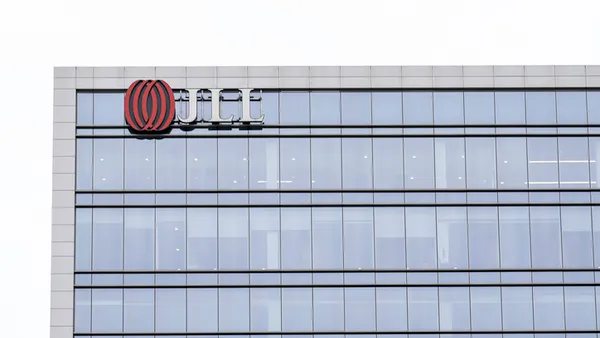Dive Brief:
- CBRE’s Spring Office Occupier Sentiment survey of 207 corporate real estate executives with U.S. offices reports that over half of respondents anticipate office space reductions at their current lease’s end.
- The move to downsize is led by larger companies (more than 10,000 employees), with 68% planning to reduce their portfolio. Only 36% of the smallest companies (less than 1,000 employees), however, plan to decrease their office space.
- Upcoming lease turnover is likely to push tenants toward walkable offices, and to increase demand for modern amenities and flexible space, per the survey.
Dive Insight:
As inconsistent return-to-office policies continue to impact landlord/tenant priorities, facility managers and building operators will likely need to employ new lease negotiation strategies, according to CBRE’s report.
Renewals are currently the preferred strategy when tenants are negotiating leases, but the report found that 32% of respondents are relocating to a better quality space and 25% are exploring the option. It notes that markets near public transportation, are walkable or have “high-end experiential retail [that is] outperforming.”
A recent look at South Florida’s commercial market found that although rents continue to rise, landlords are more willing to negotiate with tenants on lease terms, with Lee & Associates’ industrial market overview finding that rising interest rates and a looming recession has offered more room for tenants to negotiate.
“Uncertainty about the overall economy is making credit even more important to landlords, and tenants with strong credit will have increased negotiating power — within reason," said Greg Milopoulos, principal at Lee & Associates, in an interview with the South Florida Business Journal.
To potentially capture more tenants, CBRE reports that occupiers are looking for creative structures that allow for greater flexibility in lease agreements. Fifty-one percent of respondents want shared building services, amenities and/or flex space bundled into lease agreements, while 39% want leases to be structured to manage costs based on utilization of space and 34% want fully built-out suites or turnkey spaces.
This move toward bundled coworking and flexible space is cropping up across the country. Synacor of Buffalo, for example, moved its corporate headquarters from a traditional office space to Uniland Development’s Hansa co-working facility, according to Buffalo News.
In addition, 35% percent of occupiers are seeking shorter lease terms for new or renewed space, with 33% looking for flexible expansion and contraction options. Under new owner Elon Musk, Twitter stopped rent payments late last year in an attempt to rework the company’s long-term leases.
Amid high uncertainty, commercial real estate owners and investors will need to focus on “strategic, asset-level decision-making” to attract and retain tenants, maximize space and improve cost efficiency, according to Deloitte’s 2023 Commercial Real Estate Outlook,
"One of the primary entry points for occupiers into Tier 2 and 3 markets is flex; one of the key elements for big occupiers looking to fit their hub-and-spoke architectures and adaptable networks," CBRE’s Anshuman Magazine told BQ Prime.
As space opens up, building owners and operators may increasingly choose to convert this to flex space, which can then be used or upgraded into by adjacent tenants.














